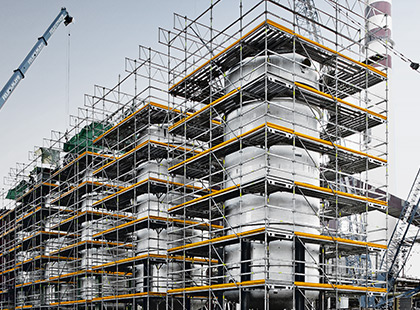
Scaffolding plays a crucial role in construction and maintenance, providing necessary access and support for workers. However, the integrity and safety of scaffolding are paramount to prevent accidents and ensure compliance with regulations. Inspecting scaffolding involves several key factors to ensure both safety and compliance. 鋁架租借 This article outlines a comprehensive approach to scaffold inspection in seven essential steps.
- Visual Inspection of Scaffold Components
The initial step in inspecting scaffolding is a thorough visual check of all components. Inspectors should examine the base plates, uprights, ledgers, and braces for any signs of damage, corrosion, or wear. Look for bent or broken parts, loose connections, and signs of rust or deterioration. Any component showing significant damage or wear should be replaced immediately to prevent potential failure.
- Verify Proper Assembly and Erection
Ensure that the scaffolding is assembled according to the manufacturer’s specifications and safety standards. Check that all components are properly installed, including the correct placement of planks, guardrails, and toe boards. Verify that the scaffold is level and securely anchored. Improper assembly can lead to instability and increase the risk of accidents, so adherence to guidelines is crucial.
- Inspect Load Capacity and Stability
Scaffolding must be able to support the intended load without compromising stability. Inspectors should verify that the scaffold is designed and erected to handle the weight it will bear, including materials, tools, and workers. Check for proper load distribution and ensure that the scaffold is not overloaded. Overloading can cause collapse or structural failure, so it is essential to adhere to load capacity limits.
- Check for Adequate Guardrails and Safety Features
Safety features, such as guardrails and toe boards, are essential to prevent falls and falling objects. Inspectors should ensure that guardrails are securely installed at the correct height and are free from any damage or defects. Toe boards should be in place to prevent tools or materials from falling off the scaffold. Proper safety features help protect workers from serious injuries and ensure compliance with safety regulations.
- Evaluate Access and Egress
Proper access and egress are critical for worker safety on scaffolding. Inspectors should check that ladders or stairways are securely attached and free of defects. Ensure that there are no obstacles that could impede safe access or exit from the scaffold. Safe access and egress are essential for preventing accidents and ensuring that workers can move safely to and from the scaffold.
- Assess Environmental Conditions
Environmental factors can impact the safety and stability of scaffolding. Inspectors should assess weather conditions, such as wind speed and precipitation, which can affect scaffold stability. In adverse weather conditions, scaffolding may need additional bracing or reinforcement. Regular inspection of environmental factors helps maintain scaffold safety under varying conditions.
- Review Documentation and Compliance
Finally, review all relevant documentation and compliance records. Ensure that scaffolding inspection reports are up to date and that any identified issues have been addressed. Verify that the scaffold meets all regulatory requirements and safety standards. Maintaining thorough documentation helps track the condition of the scaffold and ensures ongoing compliance with safety regulations.
In conclusion, inspecting scaffolding involves a detailed assessment of components, assembly, load capacity, safety features, access, environmental conditions, and documentation. By following these key factors, inspectors can help ensure the safety and compliance of scaffolding, protecting workers and preventing accidents on construction sites. Regular inspections and adherence to safety standards are vital for maintaining a safe working environment and meeting regulatory requirements.